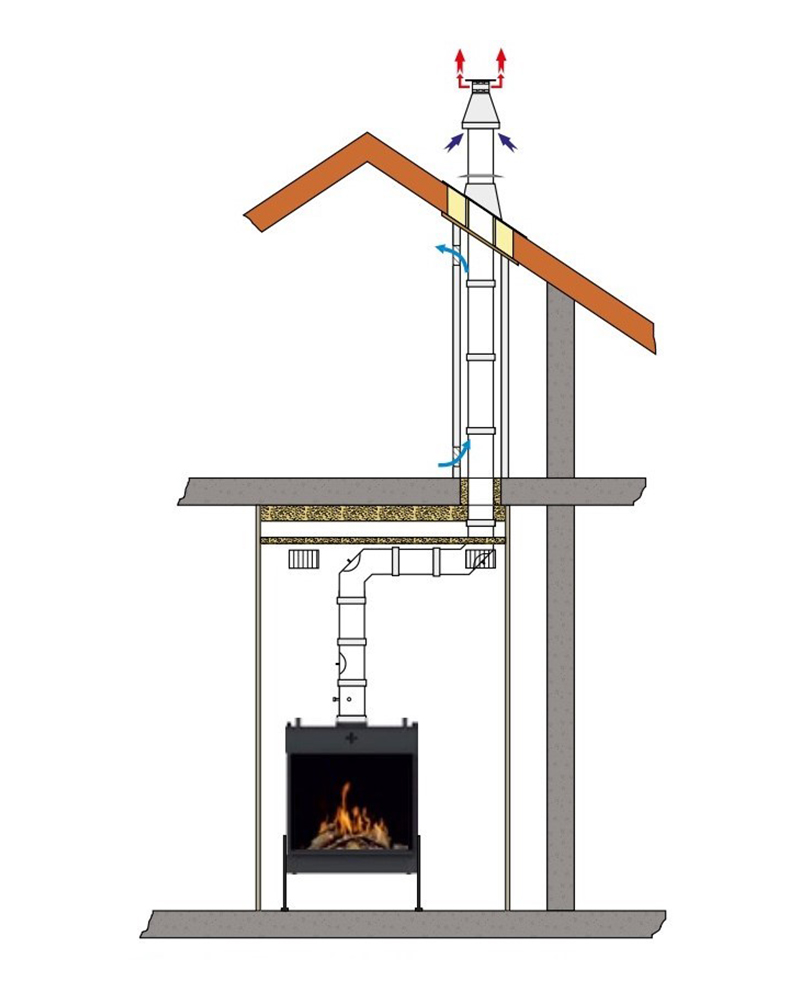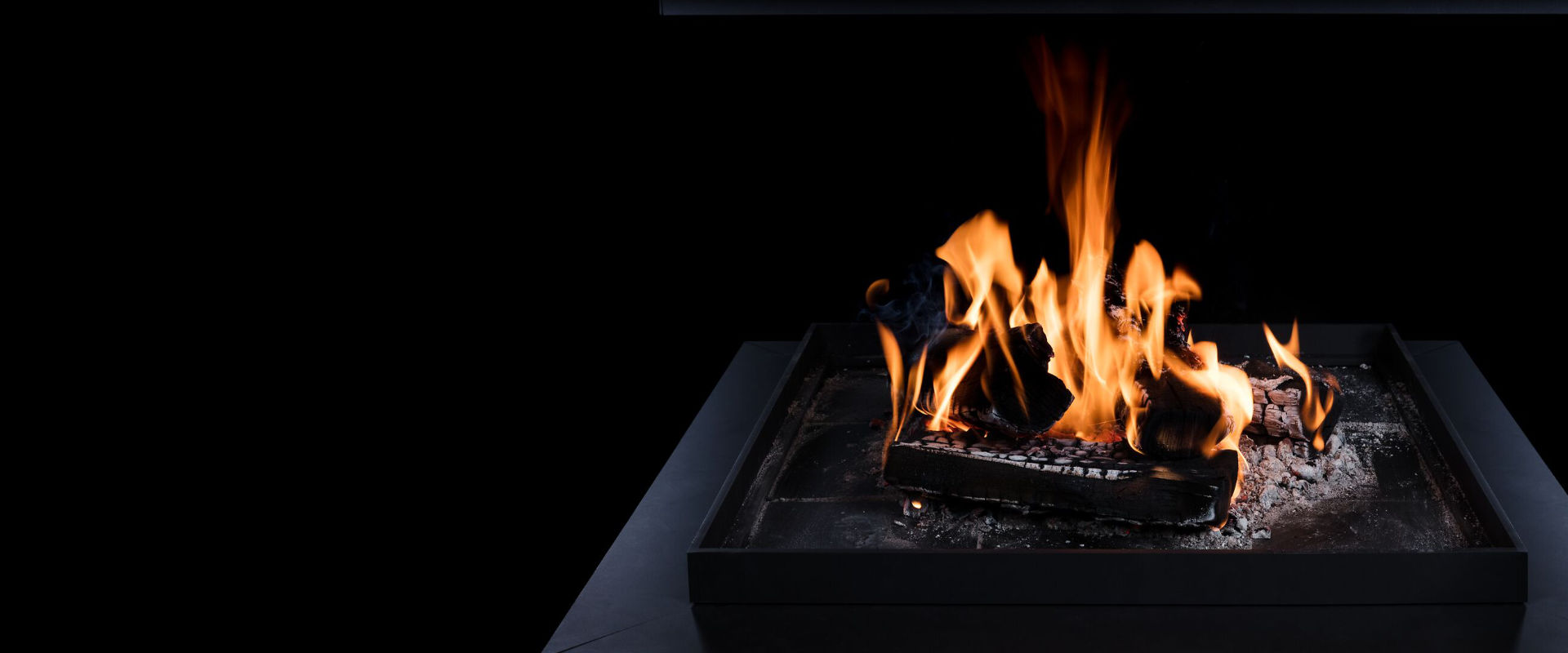Why is a chimney necessary?
In general, all fireplaces and stoves that are heated with wood must be connected to a chimney. The chimney serves to safely vent the combustion gases to the outside and is also required to create the draft needed for proper combustion. A chimney cannot be omitted, as the exhaust gases must be safely discharged.
Gas fireplaces without a chimney
One solution that works without a traditional masonry chimney, but still requires an LAS (air-flue system), is a modern gas fireplace. The exhaust pipe can be installed through an exterior wall using stainless steel or plastic tubing.
The exhaust gases are vented outside through the pipe, while fresh air is drawn in at the same time. It’s important to ensure that the outlet is not placed too close to windows, as exhaust gases could otherwise enter the house.
However, this option is not permitted in all federal states and is generally not allowed for new buildings. Many chimney sweeps also view this system with caution. Therefore, individual consultation – ideally with your local chimney sweep – is strongly recommended.


Anyone who wants to be on the safe side should choose an air-flue system installed inside the building through the roof, or one that runs along the exterior façade and exits through the roof.
Adding a chimney later
If you want to heat with wood, there’s no way around having a chimney. In this case, however, it’s possible to retrofit one. This doesn’t always require major construction work. The exhaust pipe can also be mounted on the outside wall and then led up to the roof. The only requirement is that the stove or fireplace must be installed on the interior side of the exterior wall.
If that’s not possible, a chimney must be built inside the house. This method is more complex and therefore more expensive, as ceilings and the roof need to be opened.
It is much more cost-effective if a chimney is planned right from the start when building a new house. To ensure your basic need for warmth is met, you should consider including a chimney in your home’s design from the very beginning.
Conclusion
There are several ways to enjoy a wood fire later on. The more affordable option that requires less structural work is a gas fireplace with an air-flue system. A more complex solution that involves greater construction effort is adding a chimney afterward.
Expert advice
Consult a chimney sweep early in your planning process to determine which option is feasible and makes the most sense for your individual situation.





